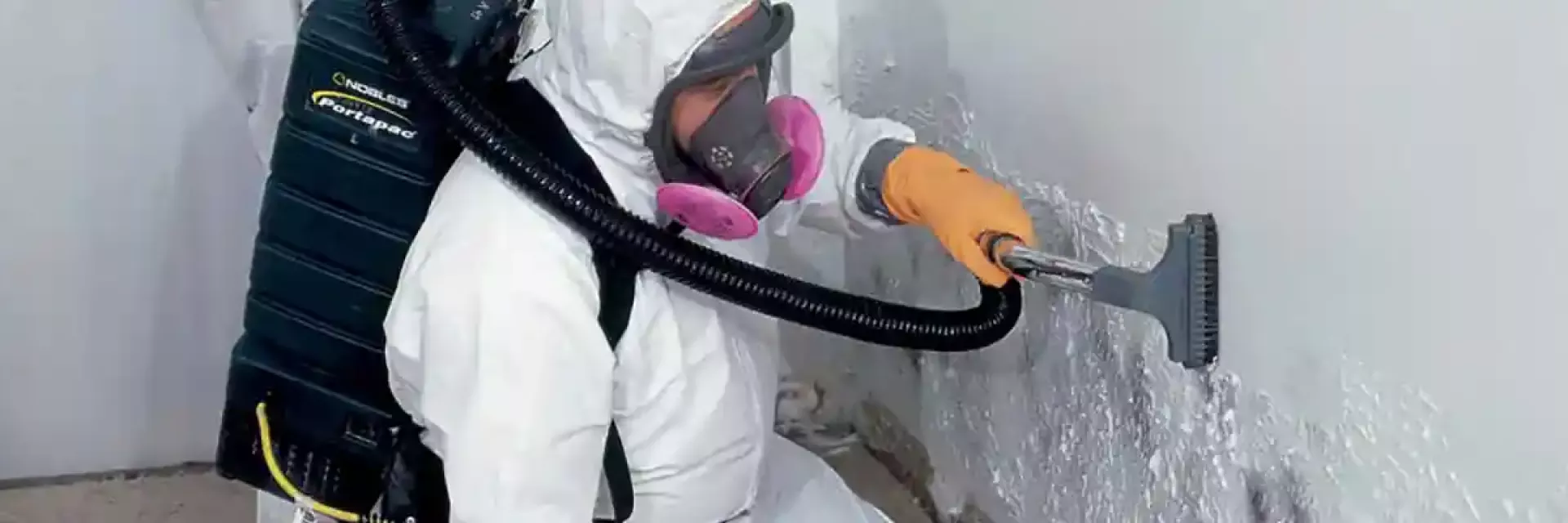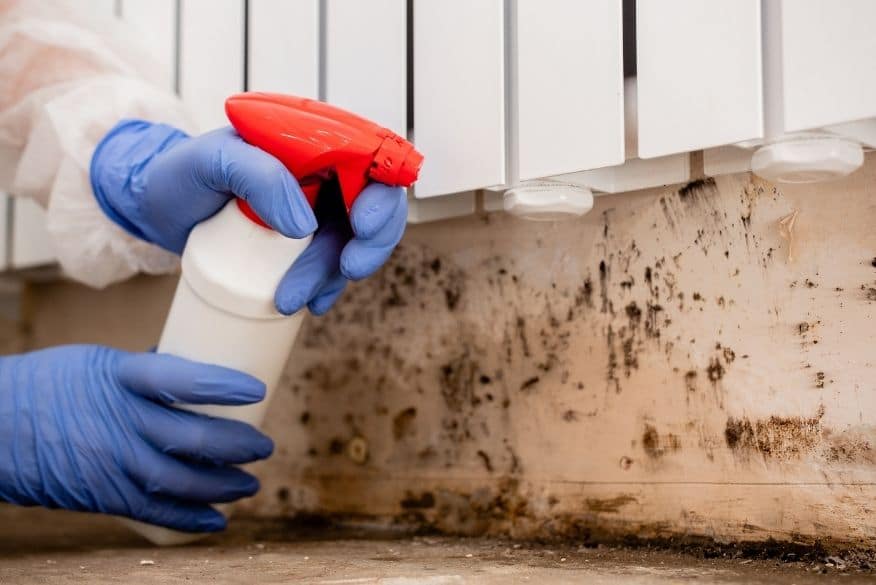Precision Mold Remediation Strategies for Ensuring a Healthy And Balanced Living Setting
In the world of preserving a healthy living setting, the efficiency of mold removal strategies stands as a crucial aspect that demands precision and competence. Mold infestations can be perilous, influencing interior air high quality and presenting dangers to both building and health. Dealing with mold growth surpasses plain surface area cleaning; it necessitates a comprehensive method that includes assessment, targeted techniques, and the utilization of innovative innovations. By exploring the intricacies of mold and mildew removal methodologies, one can acquire understanding right into safeguarding versus mold-related issues and promoting a much healthier environment.
Recognizing Mold And Mildew Development Aspects
Comprehending the key elements that contribute to mold growth is important in developing effective techniques for mold removal. Mold and mildew needs three primary aspects to flourish: moisture, ideal temperatures, and organic product for food. Moisture is possibly one of the most essential aspect as mold spores can quickly spread out and colonize in damp atmospheres. Leaks, floodings, high humidity degrees, or condensation provide the necessary wetness for mold and mildew growth. Temperature likewise plays a substantial function, with many molds favoring temperature levels in between 60-80 ° F(15-27 ° C) Finally, mold feeds upon natural products such as wood, paper, drywall, and materials.

Analysis of Mold Infestations
Having identified the key factors that add to mold growth, the next crucial action is evaluating the level of mold and mildew problems within a residential property. Mold and mildew analysis entails a complete examination to determine the kind of mold existing, the affected locations, and the extent of the infestation. Expert mold and mildew assessors use a mix of visual inspection, wetness meters, thermal imaging cams, and air sampling to collect information on the mold issue.
Aesthetic assessment is frequently the primary step in examining mold infestations, where experts aesthetically take a look at locations vulnerable to mold and mildew growth, such as restrooms, cellars, and attics. This helps determine visible mold and mildew development and locations with indicators of water damages or high dampness levels. Moisture meters are after that made use of to identify wetness degrees in structure products, helping in finding concealed mold development behind wall surfaces or ceilings.
In addition, thermal imaging cameras can be employed to find temperature level differences that may indicate wetness problems advertising mold development. Air tasting is an additional important method made use of to collect airborne mold and mildew spores, offering details on the concentration and kinds of mold existing in the indoor environment. By utilizing these evaluation approaches, specialists can precisely examine the mold invasion and establish a reliable removal strategy to guarantee a healthy living setting.

Carrying Out Targeted Remediation Strategies
To successfully deal with mold and mildew problems, executing targeted removal methods is necessary for removing the source of mold development and guaranteeing a mold-free environment. These strategies include an organized method tailored to the details mold and mildew concerns recognized during the evaluation stage. By targeting the underlying aspects adding to mold development, such as dampness intrusion, insufficient ventilation, or building material issues, removal initiatives can be a lot more exact and reliable.
One targeted removal method is to resolve water leaks immediately to stop dampness accumulation, which is a main motorist of mold and mildew proliferation. This may involve repairing plumbing leaks, boosting drain systems, or enhancing waterproofing procedures. Additionally, enhancing air flow in moist areas can help in reducing moisture levels, developing a setting much less helpful to mold and mildew growth.
Furthermore, targeted removal approaches might consist of removing and changing mold-infested products, such as drywall or insulation, and applying antimicrobial therapies to inhibit future mold and mildew development. Normal surveillance and upkeep are critical to sustaining a mold-free atmosphere following remediation initiatives - local mold advice remediation philadelphia. By implementing these targeted approaches, homeowner can successfully fight mold infestations and advertise a healthier living atmosphere
Making Use Of Advanced Mold Removal Technologies
Advanced mold Continue and mildew removal technologies play a critical function in resolving mold problems effectively and adequately. These systems can capture and filter out mold and mildew spores and other airborne bits, substantially reducing the spread of mold and mildew throughout removal.
Additionally, progressed mold and mildew removal innovations include infrared electronic cameras that can identify concealed moisture sources within ceilings or walls, aiding in the specific recognition of areas vulnerable to mold and mildew development. local mold remediation philadelphia. This innovation makes it possible for removal professionals to target damaged areas extra properly, bring about a more detailed elimination procedure
Ultraviolet (UV) light treatment is an additional cutting-edge modern technology made use of in mold and mildew removal. By leveraging these innovative modern technologies, mold remediation specialists can properly remove mold and mildew problems and develop a much healthier living environment for passengers.
Stopping Future Mold Recurrences
With the effective removal of mold and mildew invasions using innovative technologies, the emphasis currently moves towards applying durable strategies to stop future mold and mildew have a peek here recurrences. Protecting against mold and mildew from returning is crucial for keeping a healthy indoor environment. One vital method is to attend to any kind of underlying wetness issues in the building. Regular inspections for leakages in plumbing, roofings, and windows can assist identify and repair resources of excess dampness that add to mold growth.
Correct air flow is an additional necessary element of mold and mildew prevention. Guaranteeing appropriate airflow in all locations of the building can help in reducing humidity levels and prevent moisture accumulation. Using dehumidifiers in moist spaces such as basements can also aid in regulating moisture levels.
Maintaining cleanliness and promptly resolving any water damage or spills can even more assist avoid mold and mildew growth. Routine cleaning regimens need to include dusting, vacuuming, and wiping down surface areas to avoid the buildup of mold spores.
Enlightening residents concerning mold prevention practices, such as correct ventilation and moisture control, can additionally add to an aggressive technique in protecting against future mold issues. By implementing these strategies, the risk of mold reoccurrences can be considerably decreased, leading to a healthier living atmosphere.
Conclusion
By recognizing mold and mildew growth aspects, evaluating infestations, implementing targeted approaches, making use of innovative removal technologies, and protecting against future recurrences, one can properly deal with mold and mildew issues. It is important to prioritize mold and mildew remediation to make certain the health of passengers and protect against prospective health hazards associated with mold exposure.
